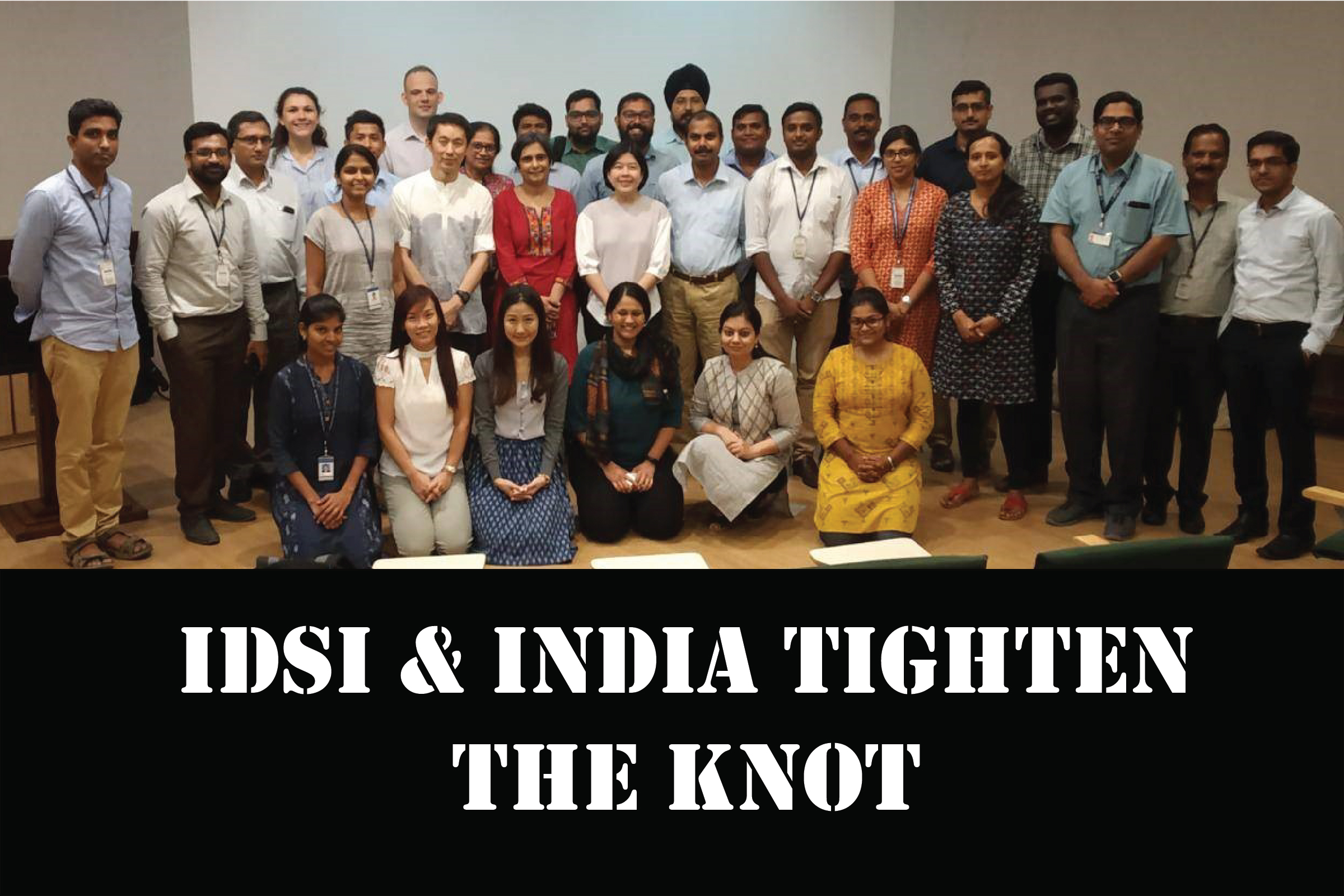Overcoming Barriers: Financing and Service Delivery for Vaccination in Fragile and Conflict-Affected States


A team of researchers at Christian Medical College (CMC) in Vellore, India have been conducting cost-of-illness studies on childhood diarrhoea (rotavirus) and enteric fever (typhoid). And HITAP, through the International Decision Support Initiative (iDSI) network, have been providing technical support to the team since August 2018. To scale up this support and to add an economic evaluation component to these studies, HITAP conducted a health technology assessment (HTA) workshop from the 6th – 8th May by collaborating with partners PGIMER and MORU.
So, let’s find out how it all went down in the sun-blazing city of Vellore.
Setting the stage for HTA
After devouring a scrumptious masala dosa for breakfast, we headed to the Centre for Stem Cell Research (CSCR) in CMC where the workshop was being held. The participants were a mix of doctors, researchers, and policy makers and very eager to get 3 days of non-stop HTA action underway.
Population rising but resources depleting, health problems rising and solutions improving, mean the decision makers are faced with difficult choices regarding what is a “good investment”. As any economist will tell you, when in doubt, conduct an economic evaluation (EE). And that’s the rationale behind HTA, to get more health for the money. To convey this message, we opened the workshop with a video on the power of HTA (don’t forget to subscribe :D).
To emphasise the importance of choosing the right topic for research and how to derive it, Dr. Yot Teerawattananon, the founder of HITAP, gave a very passionate speech quoting Sir Isaac Newton, “Standing on the Shoulders of Giants”. His takeaway points being that a research is only useful if it addresses a policy question and that identifying a gap in literature, thereby building on previous research, is a more reliable way to start investigating than getting ideas out of thin air.
He then exemplified “Thailand’s Universal Eye Screening”, highlighting how stakeholders at all levels collaborated pragmatically, giving access to an estimated 260,000 Thai children to early diagnosis and treatment they wouldn’t have received otherwise. A perfect example of how HITAP facilitates and accelerates Thailand’s Sustainable Development Goals (SDGs).The key message: details matter, only if they complete the puzzle. Therefore, right from the beginning with topic selection to rolling out the pilot study, and to conducting an EE, all entities need to work in tandem i.e. “stakeholder cohesion”, if a study is to be impactful!
Tell us about how your country is achieving its SDGs in the comments.
Contextualising
Let me begin with a question. So, what was the opportunity cost for the participants attending the workshop? They could’ve performed a surgery and saved a life, drafted a policy paper, worked on their research paper, or nothing at all! But I argue, with the knowledge gained from this workshop, they will save a thousand more lives, draft hundred more life changing policies, and write better research, in the future. So, the future benefits (discounted, obviously) clearly outweighs the costs (returns from the opportunities foregone) a quick EE for you! But one can argue it is a biased view (open for debate).
Dr. Maninder Singh from PGIMER was called upon to enlighten everyone with “Costing in Indian Context”. Many questions were raised by a studious audience regarding the discrepancies found in the Indian cost database and certain methodologies, but they were quickly humbled and appreciated the work after being aware of the challenges faced in identifying, measuring, and estimating costs in India, not an easy task I tell you. Participants were then introduced through an exercise, for the first time, to the three methodologies of adjusting cost data, recommended in the paper, “Adjusting for Inflation and Currency Changes Within Health Economic Studies”, soon to be published in Value in Health (keep an eye out, you might find it useful).

HTA workshop in India (CMC, Vellore)
Side note: A special thanks to Dr. Gagan Deep (a key contributor to rotavirus epidemiology and vaccinology in India) and many congratulations for being the first Indian female scientist to be elected a Fellow of the Royal Society (FRS).
Wizardry of the three M’s
M for masala dosa, M for modelling, M for Magic!
Dr. Wirichada Pan-ngum from MORU opened by saying, “us modellers are the modern-day witch because we throw all the relevant data in our crystal ball model and we are able to predict the future outcomes.” Obviously, it made everyone laugh but she had spoken the truth. From the simplest model like Decision Tree to the most complex Transmission Model, these “crystal balls” allow you to meticulously input parameters in a systematic flow, simulating a real disease scenario (from diagnosis to prognosis) and predict outcomes with a degree of uncertainty. Again, participants got a hands-on experience in Markov modelling on Microsoft Excel with the help of excellent teaching assistants.
Side note: Register for free to our online guide to health economic analyses and research, GEAR, which provides (i) review and comparison of national HTA guidelines, (ii) mind-maps addressing methodological challenges in HTA, and (iii) an “ask an expert” feature, all ready to serve you.
Wrapping it up
On the final day, HITAP scaled its technical support to CMC in their two major costing studies: (i) rotavirus led by Dr Nayana Nair, and, (ii) typhoid by Mr Dilesh Kumar. Special inputs came from Dr Yot (not surprising) who started mind-mapping the problems at hand and connecting the dots like a spider designing its web. This half day session had led to seven potential policy questions for the rotavirus study to explore and the methods to do so, data analyses for typhoid study had been accelerated by a year in advance and a further health economic modelling training for the project leaders at HITAP. Very productive to say the least.
When asked what they liked most about the workshop, the participants reply included, “the exercises on modelling, estimation of QALY and cost adjusting”, “Dr Yot’s unparalleled enthusiasm”, “opportunities to interact”. Around 70% of them strongly agreed and 30% agreed the workshop had enhanced their knowledge in HTA. One person went on to say, “It was a wonderful experience! Now I know where to look for help when I do an HTA”. So, we’re not that bad after all, call us maybe?
Conclusion
Despite the tropical storms and some technical glitches, HITAP successfully executed its HTA capacity building workshop. Dynamic discussions throughout the workshop showed that participants were really engaging with the concepts at hand, and in their final presentations displayed how they wanted to incorporate the learning into their current work, which was rewarding to see.
A “one-off” HTA workshop in India has now opened a two-way door for HITAP and likeminded organisations like CMC and JIPMER (follow us on twitter and Facebook for exciting news). These partnerships will not only strengthen and increase India’s appetite for technical capacity in HTA but also the region’s as a whole via HTAsialink, where knowledge and experiences are shared and learned from.
Do you think your organisation could collaborate with HITAP for the greater good? Let us know, we’ll be delighted to hear your thoughts.
India wants more of HTA and HITAP wants more of masala dosa, so I guess see you soon India!